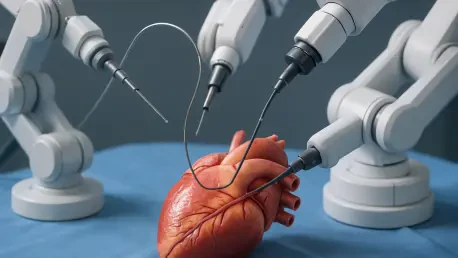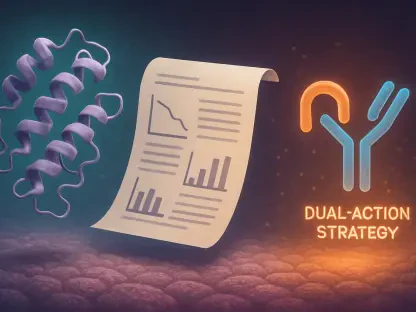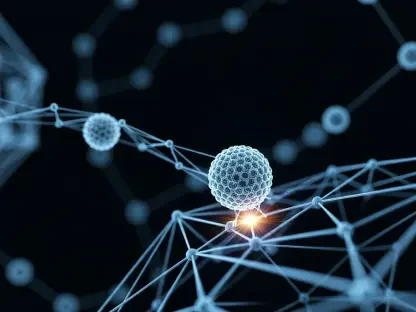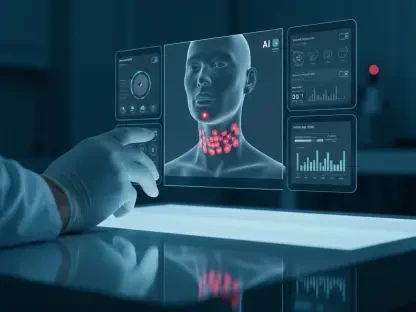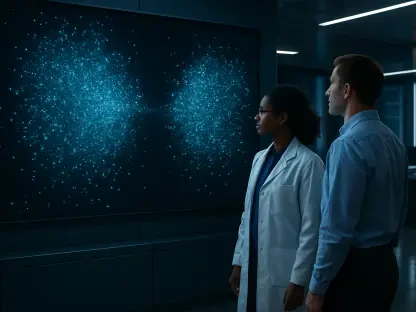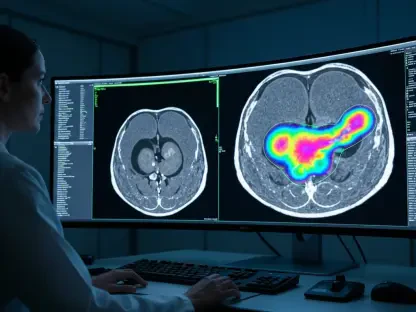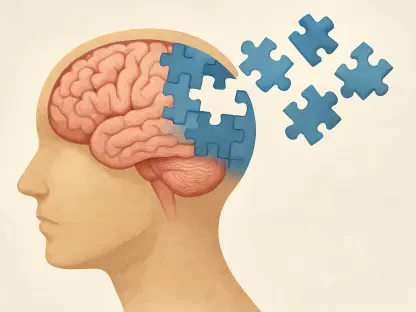Imagine a world where complex cardiac arrhythmias, conditions that disrupt the heart’s rhythm and pose significant health risks, can be diagnosed and treated with unprecedented precision and safety. This vision is becoming a reality with the recent U.S. Food and Drug Administration (FDA) clearance of an innovative device designed to revolutionize electrophysiology (EP). Developed by a leader in surgical robotics for minimally invasive endovascular interventions, the MAGiC Sweep catheter represents a pioneering step forward. As the first robotically navigated high-density mapping catheter, it promises to redefine how physicians approach the intricate challenges of mapping and treating arrhythmias. This advancement could potentially reduce procedural risks and improve patient outcomes, sparking curiosity about its broader implications for cardiac care. The integration of cutting-edge technology with clinical practice offers a glimpse into a future where efficiency and accuracy are paramount in the operating room.
A Breakthrough in Electrophysiology Technology
The introduction of the MAGiC Sweep catheter marks a significant milestone in the field of electrophysiology, addressing longstanding challenges in diagnosing and treating complex arrhythmias. This device stands out as the world’s first to combine high-density mapping with robotic navigation, enabling detailed and precise identification of arrhythmia origins within the heart. Equipped with 20 electrodes, it facilitates rapid mapping of heart chambers, providing electrophysiologists with comprehensive data in a fraction of the time compared to traditional methods. Beyond speed, the catheter’s design prioritizes patient safety through an atraumatic structure that minimizes tissue damage during procedures. By integrating seamlessly with advanced robotic systems, it ensures extended reach and precision, allowing physicians to navigate intricate cardiac anatomy with confidence. This technological leap not only enhances the accuracy of diagnostic mapping but also sets the stage for more effective ablation treatments, potentially transforming clinical workflows.
Equally impressive is the potential of MAGiC Sweep to overcome limitations that have historically hindered the adoption of robotic systems in electrophysiology. Traditional point-by-point mapping techniques often proved time-consuming and less detailed, restricting the broader use of robotics in this specialized field. With the advent of high-density mapping capabilities, this catheter enables the creation of anatomically accurate maps without the distortions commonly associated with rigid devices. Automated mapping algorithms further streamline the process, reducing the cognitive load on physicians and allowing them to focus on critical decision-making. The result is a tool that not only improves procedural efficiency but also elevates the standard of care for patients suffering from arrhythmias. As this technology gains traction, it could encourage more specialists to incorporate robotic navigation into their practices, potentially reshaping the landscape of cardiac interventions with a focus on precision and safety.
Clinical Impact and Expert Endorsements
The clinical implications of MAGiC Sweep are profound, as it offers a solution that directly addresses the needs of patients with complex cardiac arrhythmias. Experts in the field have noted that the synergy of high-density mapping and robotic navigation fills a critical gap in current EP practices. Leading cardiologists from prominent institutions have expressed enthusiasm about the catheter’s ability to produce detailed maps swiftly, which is essential for pinpointing the exact sources of irregular heartbeats. This precision translates into safer and more effective ablation procedures, minimizing the risk of complications and improving long-term outcomes for patients. The device’s design also supports a smoother procedural workflow, reducing the time patients spend under intervention and potentially lowering healthcare costs. Such advancements highlight how technology can bridge the divide between diagnostic challenges and therapeutic success in managing heart rhythm disorders.
Support from the medical community further underscores the transformative potential of this innovative catheter. Renowned specialists have emphasized that the integration of robotic navigation with high-density mapping is a long-awaited development in electrophysiology. Their feedback points to a consensus that this technology could set a new benchmark for treating arrhythmias by enhancing the accuracy of diagnoses and the efficacy of subsequent treatments. Unlike earlier tools that struggled with limited mapping resolution, MAGiC Sweep provides a comprehensive view of cardiac activity, enabling physicians to tailor interventions to individual patient needs. This personalized approach is crucial for addressing the unique challenges posed by complex arrhythmias, often resistant to standard therapies. As more clinicians gain access to this device, its impact on patient care standards is expected to grow, fostering a shift toward more technologically advanced and patient-centered practices in the field of cardiac health.
Strategic Milestone for Surgical Robotics
From a corporate perspective, the FDA clearance of MAGiC Sweep signifies a pivotal achievement for the company behind its development, reinforcing its position as a global leader in surgical robotics. This clearance, marking the first for an interventional catheter in nearly two decades for the organization, reflects a renewed focus on innovation in electrophysiology. Company leadership has highlighted that this device is just the beginning of an expansive portfolio of robotically navigated tools aimed at transforming endovascular interventions. The strategic importance of this milestone lies in its potential to expand access to minimally invasive therapies, equipping physicians with instruments that offer unmatched precision and control. This commitment to advancing medical technology underscores a broader mission to enhance productivity and intelligence in the operating room, ultimately benefiting both healthcare providers and patients.
Moreover, the introduction of MAGiC Sweep aligns with a growing trend in the medical field toward integrating robotics into specialized procedures. The catheter’s unique features, such as its ability to support anatomically accurate mapping and streamline workflows, position it as a cornerstone for future innovations. By addressing critical needs in arrhythmia treatment, the device not only strengthens the company’s reputation but also paves the way for developing additional tools that could tackle other complex medical challenges. The emphasis on safety, efficiency, and precision reflects an industry-wide push to improve clinical outcomes through technology. As this catheter begins to influence procedural standards, it may inspire other companies to invest in similar advancements, fostering a competitive environment that drives progress in minimally invasive care and reshapes how cardiac conditions are managed globally.
Paving the Way for Future Cardiac Care
Looking back, the FDA clearance granted on July 28 marked a historic moment for electrophysiology, as MAGiC Sweep emerged as a game-changing tool in the fight against cardiac arrhythmias. Its unique combination of high-density mapping and robotic navigation delivered a powerful solution that enhanced diagnostic accuracy and therapeutic effectiveness. Endorsements from leading cardiologists validated its potential to elevate patient care, while the strategic vision of its developers signaled a new era of innovation in surgical robotics. This development stood as a testament to the power of technology to address complex medical challenges with precision and safety.
Moving forward, the focus should shift to ensuring widespread adoption of such transformative devices among healthcare providers. Hospitals and clinics must prioritize training programs to familiarize electrophysiologists with robotic navigation systems, maximizing the benefits of tools like MAGiC Sweep. Additionally, ongoing research should explore how this technology can be adapted for other cardiovascular conditions, broadening its impact. Collaboration between medical professionals and technology developers will be essential to refine automated mapping algorithms and further improve procedural outcomes. By investing in these next steps, the medical community can build on past achievements to create a future where advanced interventions become the standard in cardiac care.
